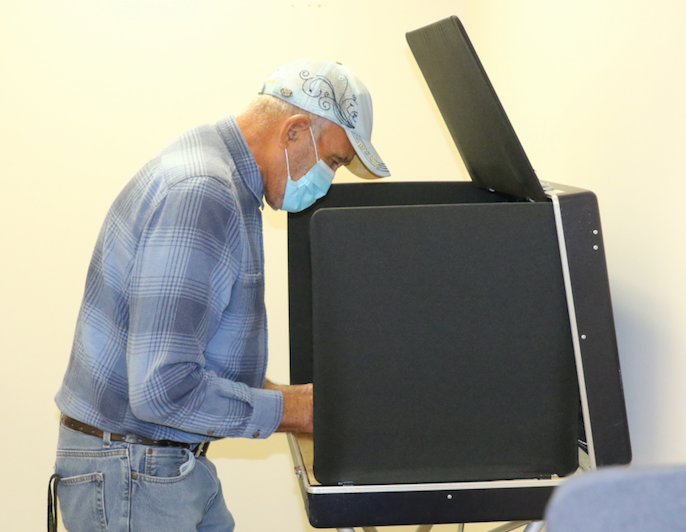Back To School?
Published 4:30 pm Tuesday, September 7, 2010
FARMVILLE – Many non-traditional students are taking advantage of opportunities through Southside Virginia Community College and adults seeking to enhance their education and job opportunities fare well there, as well as Longwood University.
Still, whether or not it's a statistical bubble that has yet to matriculate, Longwood has yet to see a great influx of non-traditional undergraduate students.
“Really haven't seen that much change,” Dean of Admissions Bob Chonko told The Herald earlier this year. "Primarily our undergraduates seem to be very traditionally aged students.”
Statistically, the wealth of Longwood's undergraduate population was between 18-21 years old (45.3 percent 18-19, 38.9 percent 20-21) in estimated percentages. But there's also 12.4 percent of students 22-24 and even, apparently, statistical representation on up to the 50-64 age bracket (at .01 percent). Raw numbers were not available.
“Our full-time students are mostly traditional living on campus and we have a very small part-time population, and that doesn't seem like it has changed very much over the last few years,” Dean Chonko said
He speculated that would be under 100 students.
“I think given the area that we're in, it's not as densely populated as a VCU would be and I suspect VCU has a lot of part-time students and a lot of adults in a variety of different types of evening classes and maybe even weekend classes and…Longwood seems to be still following a more traditional format,” Dean Chonko said.
And, yet, with a tough economy and unemployment statistics on the rise (Prince Edward, for example, is about 10 percent), there may yet be host of transfer students on the horizon for four-year institutions like Longwood.
Community colleges offer a spectrum of educational opportunities, not all of which include a track to a four-year college or university. Some older students are looking to get another skill or trade or occupational area and go back to work and don't have their focus on a four-year degree.
Southside Virginia Community College has two campuses (one in Keysville and a second in Alberta) serving some 9,300 students in a recent head count.
“That's what happens…When the economy goes one way, we usually go the other as people come back to school,” cited Dean of Enrollment and Associate Professor Brent Richey.
SVCC was up a little over 14 percent this spring, compared to the previous year's record-setting enrollment and has a head count of 9,300.
The mean age of students at SVCC was 26 last fall, according to Dean Richey. Collectively (looking at figures from the fall of 2009), the about 28 percent of students attending SVCC are in the traditional college age range of 18-21 percent. The college also offers a wealth of dual enrollment courses and about 25 percent of its students are age 17 or younger.
But there's also a healthy percentage of older students ranging between 30-44 years of age at 18 percent.
Students are getting a new trade, but are also taking advantage of the school's university parallel program, which prepares them to transfer to four-year institutions.
“…I think parents are making choices based on price 'cause they're having to tighten up and save a little money,” Dean Richey assessed. “And there are also people coming…into some of our shorter programs like truck driving and things like that. All those programs are full.”
Also flourishing is SVCC's nursing program, where they're having to turn people away, Richey cited. Nursing (including those in pre-nursing) is the largest group overall; another large group is general studies transfer program.
SVCC has an open admission policy and, in general, credits earned at community colleges are accepted at four-year colleges in state, though some have higher GPA requirements than others. SVCC graduates have gone on to such colleges as Virginia Tech and even West Point.
What they think they're seeing, Dean Chonko cited, is more of the traditional aid students staying closer to home-such as those in northern Virginia. NOVA, for example, is a big community college system.
Some of those students, Dean Chonko added, are looking to get their four-year degree after they finish their two-year degree.
“Longwood might see, and I think (our) expectation is the next couple of years, we might see more of those type of community college transfers. But, again, they would be more that traditional looking student as opposed to an adult non-traditional student,” he said.
Still, when Longwood does get an older non-traditional student, they tend to be more focused, usually drawing from their own financial resources.
“Excellent,” Dean Chonko said, when asked how they usually perform. “Excellent. I mean, there's a high motivation level…whether they've been in the military level beforehand -some of them have families. The adults that we've come in contact with…they'll do their family chores and then crack open the books at midnight and do their academics. So, highly motivated, highly engaged in the classroom regardless of what kind of high school backgrounds they may have had many years ago, oftentimes they're very successful in the grades. They just work harder, relate with the faculty very well.”
Oftentimes, Dean Chonko added, they enhance the classroom for younger students, bringing real life experiences and maturity into the classroom “that we often hear our undergraduates do appreciate…”
While the numbers may not be there just yet, the benefits may be a good lure for universities to enhance their focus on just such students.
Dean Chonko offered that he thinks Longwood would like to try to see if they can develop more non-traditional student population. Some of that might be through off-campus programs, closer to where students live, and on-line programs (which are currently offered).
Longwood is also exploring a new program in the Ft. Lee area (a growing military operation), specifically designing some courses.
Then, too, educational benefits are expanding for military veterans and many may seek to take advantage of such offerings.
“…There's quite a few people there that may be looking for higher ed, so we'll be looking at some of those populations as well down the road,” Dean Chonko said.
The University has its goals for recruitment. Dean Chonko thinks the high school population in-state is projected to kind of level for the next couple of years. Longwood is looking to expand its graduate area, which would reach out to mostly-adult population.
“So…we do have goals,” he said. “We have to kind of stay in business here particularly in these really tight economic times. You don't want to lose revenue…and adults are very high completers of programs. So, it may take them longer. It might take them like so many more months or years longer than a traditional aid student, but they usually stick with it and…you have high graduation rates with that population so that's a good source of students for us.”




